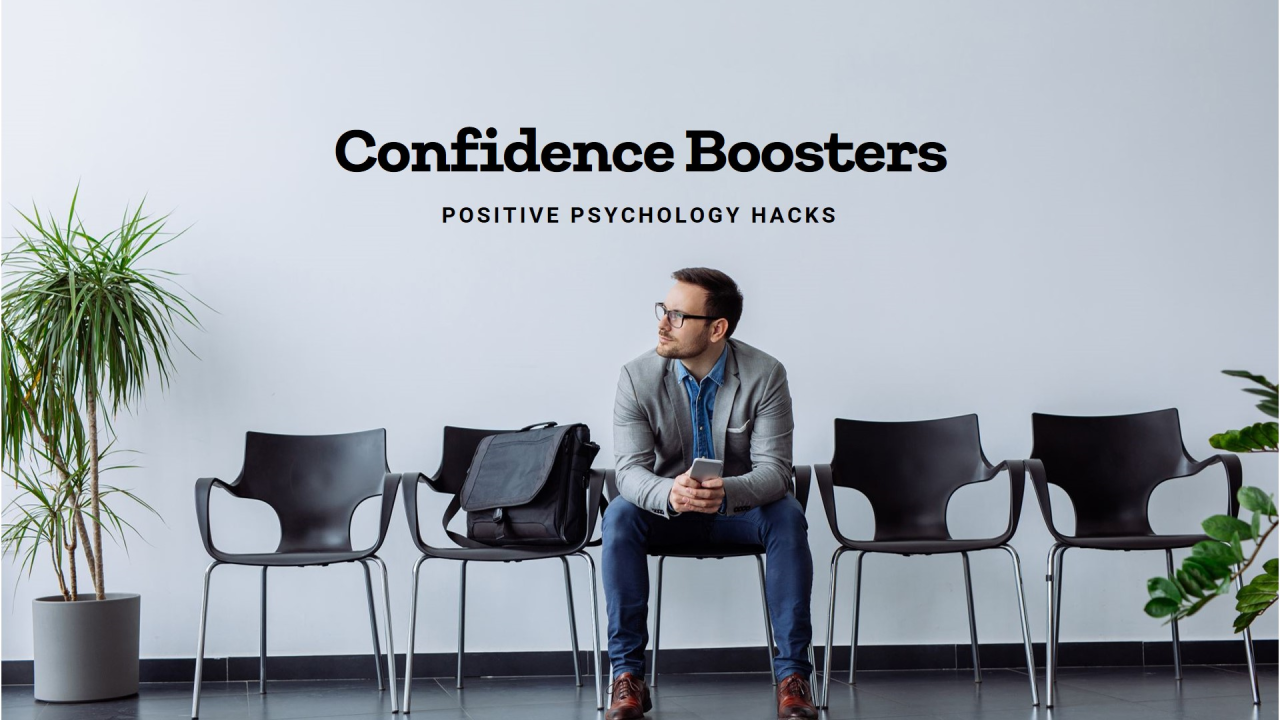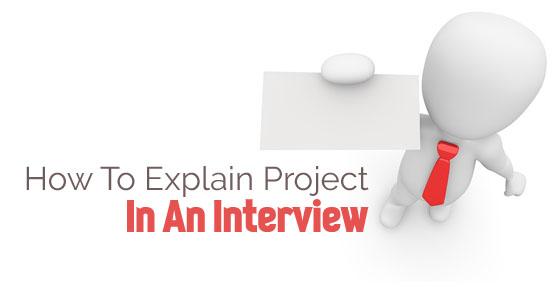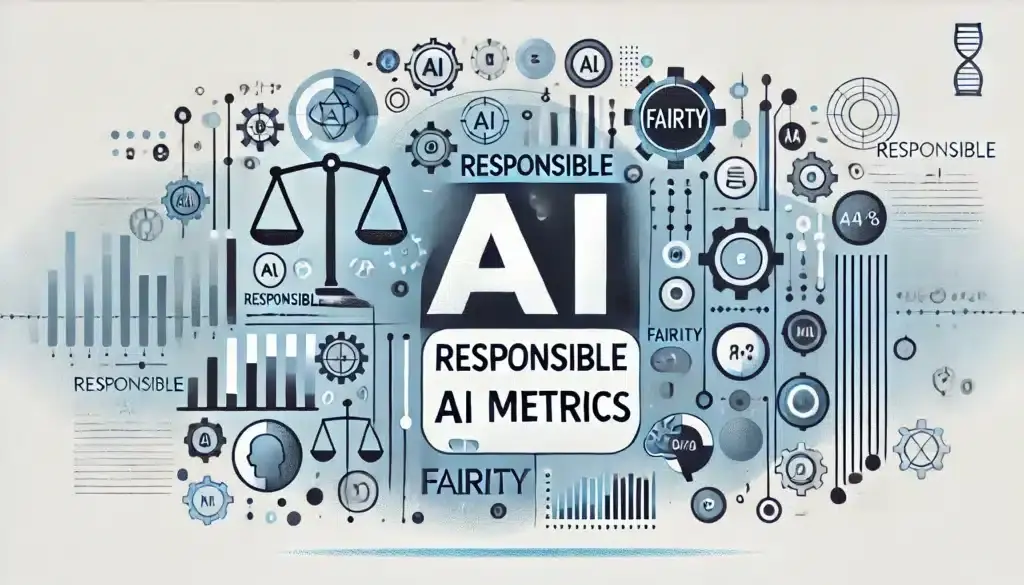Section 1 - What Happens in Your Brain During an ML Interview
If you’ve ever walked into an ML interview feeling completely prepared, only to blank out the moment the interviewer said, “So, tell me how you’d approach this problem”, you’ve experienced what neuroscientists call a threat-induced cognitive shutdown.
It’s not a lack of skill. It’s biology misfiring.
When you face an evaluative situation like an interview, your body’s ancient defense system, the amygdala, interprets it as danger. Thousands of years ago, this same mechanism helped humans survive predators; today, it’s what causes your palms to sweat before a recruiter call.
a. The Science of the Stress Response
Inside your brain, the moment you sense judgment, the amygdala sends an alert to the hypothalamus, triggering a release of adrenaline and cortisol.
Your heart rate spikes. Your breathing quickens. Blood flow shifts from the prefrontal cortex, the part of your brain responsible for logic, memory, and speech, toward your muscles.
That’s why your thoughts start to blur. You “forget” things you know perfectly well. You start rushing your answers or second-guessing yourself.
Your brain, in that moment, doesn’t want to reason, it wants to escape.
This is why interview anxiety feels irrational. Even when you know you’re qualified, your nervous system treats the situation as if your life is on the line.
But the truth is: your body isn’t sabotaging you, it’s trying to help. The stress response was designed to keep you alert and focused.
The goal isn’t to eliminate it. The goal is to retrain your brain to interpret that activation as energy, not fear.
Check out Interview Node’s guide “How to Handle Curveball Questions in ML Interviews Without Freezing”
b. What Interview Anxiety Looks Like in the Brain
In MRI studies of high-performing professionals under social evaluation, researchers found that:
- The amygdala becomes hyperactive, flooding the system with cortisol.
- The anterior cingulate cortex (ACC), responsible for error detection, becomes hypersensitive, which is why you suddenly fixate on small mistakes.
- The prefrontal cortex, where reasoning happens, partially shuts down under sustained cortisol exposure.
In short:
Anxiety isn’t just mental, it’s mechanical.
That means confidence isn’t just “believing in yourself”, it’s learning to maintain prefrontal access under stress.
This is why preparation alone doesn’t guarantee success. You can rehearse the most elegant ML pipeline explanation, but if your amygdala hijacks your prefrontal cortex, it won’t matter. You’ll know the answer, you just won’t be able to say it.
c. Why ML Interviews Trigger the Strongest Reactions
Machine learning interviews are uniquely anxiety-provoking because they combine technical reasoning with social evaluation.
You’re being judged not only for what you know, but how you think under uncertainty.
The human brain is wired to interpret uncertain evaluation as high threat.
Ambiguity, like an open-ended ML question (“How would you design a recommendation system?”), spikes cortisol faster than a predictable math quiz.
Why? Because the brain can’t predict success or failure. It hates unpredictability more than difficulty.
This is why candidates often do fine in private practice but freeze in a live session.
The content didn’t change, the stakes did.
d. How Confidence Changes Your Chemistry
Here’s the fascinating part: the very same biology that causes panic can also create presence.
The stress chemicals your body releases, adrenaline, dopamine, and cortisol, can actually enhance focus when interpreted correctly.
This is the foundation of neurocognitive reframing.
If you consciously label your physiological response differently, saying,
“I’m not anxious; I’m excited to solve a complex problem” —
the prefrontal cortex remains engaged, and cortisol levels normalize faster.
In a 2022 Harvard study, candidates who reinterpreted anxiety as readiness performed 23% better and were rated as more “confident and capable” by interviewers.
In other words, it’s not the stress that ruins performance, it’s the interpretation of stress.
e. Training Your Brain to Stay in Control
To perform at your cognitive peak in interviews, you need to build familiarity with the stress response, not avoid it.
This process, known as stress inoculation training, involves:
- Exposure: Regularly simulate interview settings to desensitize your amygdala.
- Reframing: Replace “I’m nervous” with “My body’s preparing me to focus.”
- Recovery: Use deliberate breathing or physical grounding to reset after stress.
Over time, your nervous system learns: “This is not danger, this is data.”
You start to associate pressure with precision instead of panic.
That’s what true confidence looks like in neuroscience terms: an efficient stress response loop.
Key Takeaway
Confidence isn’t about removing anxiety, it’s about retraining your brain to handle it.
When you understand the biology behind your reactions, you stop taking them personally.
You realize the trembling hands, the fast heartbeat, the shallow breath, they’re not signs of weakness. They’re signs that your system is alive, alert, and ready.
The next time your pulse spikes before an ML interview, smile.
That’s not fear, it’s energy waiting to be directed.
Section 2 - The Confidence Equation: Competence × Self-Perception
If you’ve ever left an interview thinking, “I knew every concept, so why did I sound unsure?”, you’ve experienced the confidence paradox:
You can be technically competent yet still project uncertainty.
And in machine learning interviews, that mismatch can cost you the offer, because hiring teams often equate confidence with capability, especially when evaluating ambiguous reasoning or system design problems.
Let’s unpack why this happens, and more importantly, how you can fix it using what psychology and behavioral neuroscience tell us about self-perception.
a. Confidence Is a Signal, Not a Feeling
Confidence isn’t the absence of doubt, it’s the management of doubt.
In high-stakes interviews, everyone feels uncertainty. The difference between those who appear confident and those who don’t isn’t that one group has no fear, it’s that they’ve trained themselves to signal calmness and control despite it.
Think of confidence as a transmission system:
- Competence is the engine (your knowledge, skills, experience).
- Self-perception is the transmission (how effectively you convey that competence).
If your transmission is weak, your engine can’t show its true power.
For ML engineers, this signal is especially critical. When you’re explaining model choices, pipeline design, or trade-offs, your voice tone, pacing, and structure communicate as much as your technical content.
b. The “Confidence Gap” Between Competence and Perception
Psychologists call this the confidence gap, the space between what you know and what you believe you can express under judgment.
This gap widens when you:
- Ruminate about being evaluated (“What if they think I’m not senior enough?”).
- Compare your communication to others (“They’re more fluent or polished.”).
- Hyper-focus on mistakes (“I said ‘uh’ twice, now I’ve lost credibility.”).
Each of these thoughts activates the self-monitoring loop in the brain, a feedback circuit that hijacks working memory.
The result? Your reasoning fragments. You sound hesitant even when your logic is solid.
Neuroscience shows that once the prefrontal cortex begins monitoring your own speech instead of processing the problem, fluency drops by up to 30%.
That’s why anxiety feels like an “out-of-body” experience, your brain is trying to analyze itself while performing.
The fix isn’t to “stop overthinking.” The fix is to redirect self-perception from judgment to process, from “How am I doing?” to “What’s the next reasoning step?”
Check out Interview Node’s guide “Behavioral ML Interviews: How to Showcase Impact Beyond Just Code”
c. Recalibrating Self-Perception: Three Science-Backed Techniques
There are three reliable ways to retrain your self-perception so that confidence becomes automatic.
i. The Cognitive Reframe: Anxiety → Activation
When your body reacts, fast heartbeat, sweaty palms, your instinct is to suppress it.
But studies show suppression actually amplifies stress.
Instead, label your symptoms differently:
“I’m not nervous, my body is preparing for performance.”
That simple reframing activates the dorsolateral prefrontal cortex, which helps reinterpret emotion as energy.
It turns panic into power.
In interviews, you can even say to yourself silently before answering:
“Let’s use this energy to focus.”
That shift alone can improve reasoning retention and speech coherence.
ii. The Behavioral Mirror: Train the Body, Train the Brain
The nervous system doesn’t distinguish between internal and external cues.
So when you adopt confident body patterns, upright posture, steady breathing, anchored tone, your brain recalibrates internal confidence to match.
This is the principle of embodied cognition: your physiology shapes your mindset.
Try this 60-second body reset before every ML interview:
- Stand tall with feet grounded.
- Inhale deeply through your nose for 4 seconds, exhale through your mouth for 6.
- Relax your shoulders and jaw.
This simple pattern lowers cortisol and increases testosterone, the same physiological profile found in confident speakers.
Check out Interview Node’s guide “The Hidden Skills ML Interviewers Look For (That Aren’t on the Job Description)”
iii. The Evidence Log: Collect Proof of Competence
Your brain believes what it sees repeated.
If you keep a “competence evidence log”, a written record of your achievements, practice scores, or successful answers, you’re feeding your subconscious proof that you’re capable.
This is critical because anxiety often arises from memory bias: under stress, your brain forgets wins and recalls failures.
Each time you practice an ML case or nail a problem, log it.
Before your interview, skim your log, it cues your self-perception system with confidence data.
d. Confidence Is Contagious
Interviewers unconsciously mirror the energy you project, a phenomenon called emotional contagion.
If you’re anxious, they feel tension. If you’re calm and structured, they relax and interpret your reasoning as strong.
That’s why managing self-perception isn’t just about feeling confident, it’s about controlling the emotional tone of the conversation.
Confident energy invites curiosity and collaboration.
Key Takeaway
Confidence isn’t a personality gift, it’s a neural feedback system you can train.
By mastering how you interpret your body’s reactions, how you physically signal calm, and how you reinforce proof of competence, you create a new equation:
Confidence = Competence × Self-Belief in Action.
The next time your brain whispers, “What if I mess up?”, respond with,
“Even if I do, I’ll reason through it.”
That’s real confidence, not the absence of fear, but the ability to stay focused while it’s there.
Section 3 - Reprogramming Anxiety: How to Retrain Your Interview Mindset
Every ML candidate has faced it, the 30 seconds before an interview starts, when your body feels hijacked by nerves. Your palms sweat, your breath shortens, and your brain starts predicting disaster scenarios.
That moment has nothing to do with logic, and everything to do with conditioning.
Your brain has learned, over time, that “interview” means threat.
To break that pattern, you can’t just tell yourself to “stay calm.” You need to reprogram your neural associations, so your body recognizes interviews as familiar, manageable, even energizing challenges.
Let’s break down how to do that, using the same behavioral neuroscience principles elite athletes, surgeons, and NASA astronauts use to perform under pressure.
Check out Interview Node’s guide “How to Practice ML Interviews Alone: The Science of Effective Self-Preparation”
a. Understand What You’re Actually Fighting
When anxiety hits, you’re not fighting your mind, you’re fighting your autonomic nervous system (ANS).
The ANS has two modes:
- Sympathetic (fight-or-flight): Rapid heart rate, shallow breathing, hyperfocus on threat.
- Parasympathetic (rest-and-digest): Calm awareness, steady breathing, focused cognition.
In interviews, the sympathetic system takes over automatically.
The key to performance isn’t suppressing it, it’s balancing it.
When you activate your parasympathetic system intentionally (through breathing, posture, or ritual), your brain regains prefrontal access, restoring logic, memory, and verbal clarity.
That’s not psychology, that’s neuro-regulation.
b. Step 1: Rehearse the Environment (Train Familiarity)
Your brain panics when it encounters uncertainty.
That’s why even highly skilled ML engineers can freeze in a Zoom interview, not because of the questions, but because of the context.
The trick? Make the interview context familiar.
Do this daily in the weeks before:
- Open your laptop camera.
- Sit at the exact setup you’ll use during the interview.
- Speak your answers out loud as if the interviewer were there.
- Time your responses to mimic real pacing.
When you do this, your amygdala (threat center) gets repeated exposure to the stimuli, camera, tone of your own voice, screen layout.
Gradually, it stops flagging them as dangerous.
This technique, called exposure conditioning, is one of the most evidence-backed anxiety interventions in cognitive-behavioral science.
By the time the real interview happens, your body’s message is no longer “Alert, danger!”
It’s “I’ve been here before. This is familiar.”
c. Step 2: Build Predictability Through Ritual
High performers across disciplines, from chess grandmasters to fighter pilots, use pre-performance rituals to regulate state.
Why? Because the brain craves predictability before challenge.
A simple ritual can cue calmness faster than hours of meditation.
Your ritual doesn’t need to be complicated. It can be as simple as:
- Movement cue: Shoulder roll, posture reset.
- Breath cue: 4-second inhale, 6-second exhale.
- Focus cue: Say aloud, “Let’s reason this out step by step.”
This combination activates the parasympathetic brake (vagus nerve), reducing heart rate variability and releasing dopamine, the chemical of controlled alertness.
Over time, your brain links that ritual to safety and readiness.
So when you repeat it before an interview, your physiology automatically stabilizes.
d. Step 3: Recode Anxiety as Curiosity
One of the most powerful reframing tools in performance psychology is cognitive reinterpretation, changing what a stimulus means to you.
When a tough ML question lands, your untrained brain says, “Oh no, I’m being tested.”
The trained brain says, “Interesting, a new problem to explore.”
That single semantic shift, threat → curiosity, completely changes which neural networks activate.
Curiosity engages the prefrontal cortex and dopaminergic pathways; fear engages the amygdala.
In other words, reframing activates learning mode instead of survival mode.
To practice this, re-label every question you don’t know as a puzzle instead of a judgment.
Say aloud:
“Let’s break this down together.”
This communicates composure to both your brain and your interviewer.
e. Step 4: Micro-Dose Stress Exposure
The human nervous system learns through graded exposure.
If you only practice when calm, you’re training for the wrong conditions.
Instead, micro-dose discomfort:
- Add a timer to your solo practice.
- Record yourself on video.
- Simulate back-to-back questions with no breaks.
These mild stressors teach your brain to stay cognitive while under load.
Each repetition increases resilience tolerance, the distance between activation and overwhelm.
By interview day, your stress response feels like background noise, not a threat.
Check out Interview Node’s guide “The Future of ML Interview Prep: AI-Powered Mock Interviews”
f. Step 5: Normalize Recovery
After every mock or real interview, decompress intentionally.
Don’t just close your laptop and move on, your nervous system needs a reset signal to prevent stress carryover.
A 3-minute recovery protocol works wonders:
- Close eyes and exhale fully.
- Relax your shoulders and jaw.
- Reflect on one thing you did well, one thing to adjust.
That small act trains your body to recover faster after high performance, a key predictor of long-term confidence stability.
Key Takeaway
You can’t think your way out of anxiety, you must train your nervous system out of it.
By rehearsing, ritualizing, reframing, and recovering, you teach your body that interviews aren’t danger zones, they’re problem-solving sessions.
Over time, that reprogramming becomes your advantage.
You’ll walk into interviews not hoping to feel calm, but knowing how to create calm on command.
“Confidence isn’t magic. It’s physiology practiced until predictable.”
Section 4 - Communication Psychology: Projecting Calm Under Pressure
Machine learning interviews aren’t just about how you think, they’re about how you sound while thinking.
You could have the perfect reasoning flow, but if it’s delivered with rushed speech, inconsistent tone, or visible tension, your brilliance gets lost behind the noise.
That’s because confidence, from a psychological perspective, is a perception, not a feeling.
Interviewers don’t have access to your thoughts, they only have your signals.
Your tone, rhythm, posture, and eye contact tell a subconscious story before your logic does.
The good news? You can train these cues just as deliberately as you train your technical skills.
Check out Interview Node’s guide “Beyond the Model: How to Talk About Business Impact in ML Interviews”
a. The Hidden Language of Confidence
The human brain is wired to read micro-behaviors as trust signals.
When you speak in a calm, steady tone, maintain pauses, and use structured sentences, interviewers subconsciously infer competence and composure.
Psychologists call this the thin-slice effect, the brain’s ability to make judgments about confidence and competence within the first 10 seconds of interaction.
That means before you’ve even started explaining your ML architecture, your body language has already set your credibility baseline.
Here’s how those micro-signals translate:
| Behavior | Subconscious Interpretation |
| Fast, unstructured speech | Nervous, unsure |
| Calm tone with measured pauses | Thoughtful, analytical |
| Excessive filler words (“uh,” “like,” “you know”) | Low cognitive clarity |
| Even tone, relaxed shoulders | Stable, confident |
| Avoiding camera eye contact | Insecurity or defensiveness |
| Slight smile while explaining | Approachability, emotional control |
Your goal isn’t to “fake” these, it’s to align internal composure with external clarity.
b. Slow Is Smart: Why Pacing Wins Interviews
In the world of high-pressure communication, speed is the enemy of clarity.
When you speak too quickly, your working memory can’t keep up with your vocal output.
Your sentences become fragmented, and your interviewer struggles to follow your reasoning chain.
The brain interprets fast speech as anxiety-driven urgency.
By contrast, slow, deliberate pacing signals executive control.
This is why seasoned ML engineers, especially those in senior or research positions, often speak in structured, rhythmic patterns when explaining complex topics.
Here’s a simple pacing formula to adopt:
- Before answering, take a one-second pause.
- Break your answer into phases: context → reasoning → example → summary.
- Insert micro-pauses between transitions to let your interviewer digest information.
You’re not only pacing your thoughts, you’re pacing their understanding.
c. Tone and Resonance: The Confidence Multiplier
Your tone carries emotional weight.
A steady, resonant tone tells the listener your reasoning is grounded.
A high-pitched, breathy tone suggests tension or overexertion.
To project authority, train vocal grounding:
- Breathe from your diaphragm, not your chest.
- Lower your speaking pace by 10%.
- End statements with downward inflection instead of upward questioning tones.
Example:
❌ “So I’d probably use a decision tree?”
✅ “I’d use a decision tree here because it handles nonlinearity effectively.”
That subtle tonal difference communicates certainty, even when you’re still reasoning.
Confidence doesn’t mean you know everything, it means you sound like you know what you know.
d. Strategic Silence: Your Secret Weapon
Most candidates fear silence, they rush to fill every gap.
But silence, when used intentionally, projects mastery.
Psychologically, silence demonstrates two things:
- You’re thinking, not reacting.
- You’re comfortable enough to hold space without panicking.
When an interviewer asks a challenging question, take a 2–3 second pause.
Breathe. Collect your reasoning. Then begin:
“Let me think through that step by step…”
Those words are magic. They buy time, demonstrate structure, and tell the interviewer, “I’m reasoning with clarity.”
Ironically, interviewers interpret short silences as signs of control, not confusion.
e. Body Alignment and Nonverbal Clarity
Your body communicates confidence far faster than your words.
The embodied cognition principle states:
The way you hold your body directly shapes the way you feel and think.
In virtual or in-person interviews:
- Sit upright with your shoulders relaxed and feet flat on the floor.
- Keep your gestures natural, use your hands only to emphasize logical transitions.
- Maintain gentle eye contact with the camera, not an intense stare.
- Nod occasionally to signal engagement.
These cues regulate your internal state while signaling confidence externally.
In fact, studies show that upright posture alone can lower perceived anxiety levels by up to 25%, simply because it stabilizes breathing and heart rate.
f. Control the Emotional Tone of the Room
Emotions are contagious, this is called affective resonance.
If you appear tense, your interviewer unconsciously mirrors that energy.
If you project calm curiosity, they relax and engage collaboratively.
This is why your composure doesn’t just affect you, it shapes the entire conversation dynamic.
By maintaining measured pacing, steady tone, and open posture, you create an environment where both sides think better.
Key Takeaway
In ML interviews, confidence isn’t declared, it’s transmitted.
It’s not what you know, but how you communicate what you know.
Every word, pause, and breath is part of your confidence signal.
The trick isn’t to sound rehearsed, it’s to sound regulated.
“Clarity isn’t a communication skill. It’s a confidence signal.”
When you train your pacing, tone, and silence, you’re not faking confidence, you’re translating competence into presence.
Conclusion: Confidence Is a Cognitive Skill - Not a Personality Trait
The biggest myth about confidence is that it’s something you either have or don’t.
That’s false.
Confidence is not a fixed personality trait, it’s a neurocognitive state that can be trained, optimized, and sustained.
It’s what happens when your brain’s prefrontal cortex (logic) and limbic system (emotion) learn to work in sync.
When your thoughts, physiology, and self-perception align, you stop fighting your nerves, and start using them as fuel.
Every ML engineer who thrives under interview pressure has mastered the same loop:
Awareness → Regulation → Expression → Reflection.
They’ve trained their biology like an athlete trains for endurance.
They’ve built feedback systems that turn anxiety into curiosity, rejection into iteration, and self-doubt into data.
That’s the real confidence equation, not blind positivity, but measurable self-trust built through repetition.
When your next ML interview begins, remember:
- That racing heartbeat? It’s your system optimizing for alertness.
- That brief pause before speaking? It’s your brain allocating working memory.
- That nervous energy? It’s your body’s way of saying, “We’re ready to perform.”
You can’t silence anxiety, but you can repurpose it.
Confidence isn’t calmness before action, it’s control during it.
“Calm isn’t the absence of fear. It’s the mastery of reaction.”
Check out Interview Node’s guide “The Psychology of Interviews: Why Confidence Often Beats Perfect Answers”
FAQs: Confidence, Nerves, and Mental Performance in ML Interviews
1. How can I stop overthinking right before an interview?
Overthinking happens when your brain anticipates outcomes instead of processing the present.
Use the “5-4-3-2-1 grounding technique”, name five things you can see, four you can touch, three you can hear, two you can smell, and one you can feel.
It re-centers your focus on the immediate environment, silencing mental noise.
2. What’s the fastest way to calm anxiety before a technical round?
Regulate your breathing before you regulate your thoughts.
Use the 4-6 cycle: inhale for 4 seconds, exhale for 6.
This activates the vagus nerve, lowering heart rate and signaling your body, “We’re safe.”
Calm physiology creates calm cognition.
3. Can I train my brain to associate interviews with excitement instead of fear?
Yes, that’s called cognitive reappraisal.
By deliberately labeling nervousness as energy (“I’m excited to solve this challenge”), your brain shifts from fear (amygdala-driven) to curiosity (dopamine-driven).
Repeated reappraisal rewires this response over time.
4. Why do I freeze when I get unexpected questions, even when I know the topic?
That’s your threat response blocking working memory access.
To counter it, narrate your thought process out loud.
Saying, “Let me think through this step by step…” externalizes reasoning and calms the prefrontal cortex, re-enabling recall.
5. I know my material but still sound hesitant, why?
Hesitation usually stems from self-monitoring, not lack of knowledge.
When you’re hyper-aware of how you sound, your brain splits its attention between performing and observing.
The fix: focus on process, not performance. Speak as if you’re teaching, not proving.
6. What role does body language actually play in ML interviews?
More than most think.
Your posture, breathing, and facial expressions directly influence brain chemistry through embodied cognition.
An upright posture boosts dopamine and testosterone while lowering cortisol, the physiological recipe for confidence.
7. Is it possible to appear confident without being arrogant?
Yes, true confidence sounds collaborative, not dominant.
Use inclusive phrasing like:
“Here’s how I’d approach this, but I’d also consider alternative trade-offs.”
This signals both competence and intellectual humility, a trait interviewers love.
8. Should I rehearse answers word-for-word to sound more confident?
No, over-rehearsal triggers cognitive rigidity.
You’ll sound scripted instead of adaptive.
Instead, memorize frameworks, not sentences.
For example, when asked about an ML project, structure it as:
Context → Challenge → Action → Result → Learning.
9. How do I handle imposter syndrome before a big FAANG interview?
Remember: FAANG interviewers aren’t looking for perfection, they’re evaluating how you think under constraint.
Combat imposter syndrome by keeping a proof-of-competence file, a personal document of past achievements, solved problems, and positive feedback.
It rebalances your brain’s negativity bias.
10. Why do I lose confidence after getting rejected multiple times?
Each rejection activates your brain’s error-prediction network, it expects pain before it even occurs again.
The antidote is pattern visibility.
Track your progress across interviews; once you see consistent improvements, the brain recalibrates its prediction model, replacing fear with confidence in growth.
11. What’s the single most effective way to build confidence long-term?
Deliberate exposure.
Run mock interviews weekly under simulated stress.
Record them, analyze tone and reasoning, and repeat.
Confidence compounds through repetition under awareness.
12. How can I project confidence if English isn’t my first language?
Structure is your power.
Even if your fluency varies, organized reasoning always lands well.
Use connector phrases like “First… Next… Finally…” to guide your listener.
Interviewers care far more about logical clarity than accent.
13. How do I recover when I make a visible mistake mid-answer?
Acknowledge, reframe, and move forward:
“That’s a good catch, let me restate that more precisely.”
This small act signals psychological safety and cognitive composure, two traits that matter more than flawless delivery.
14. How can I maintain confidence throughout a multi-round interview day?
Use micro-recovery breaks.
Between rounds, step away from your screen, stretch, or close your eyes for 2 minutes.
Even short breaks reset your parasympathetic system, preserving focus for later sessions.
15. What’s the ultimate mindset for interview-day confidence?
Replace evaluation with exploration.
Instead of thinking, “I’m being tested,” say,
“I’m collaborating on solving a problem.”
This transforms your state from fear-based defense to curiosity-based flow, the neurological sweet spot for clear reasoning.
Confidence isn’t pretending not to care, it’s caring with composure.
Final Takeaway
Confidence isn’t a mask, it’s a method.
It’s not something you feel before you act, it’s something you generate through action.
When you learn to understand your biology, regulate your state, and reflect like an engineer, confidence becomes predictable.
You stop hoping to feel ready, and start creating readiness through clarity, control, and repetition.
“Confidence is built quietly. It speaks loudly.”
Every interview you take is not just a test, it’s neural training for your next level.
Your mind isn’t your enemy. It’s your best performance system, once you learn how to program it.






